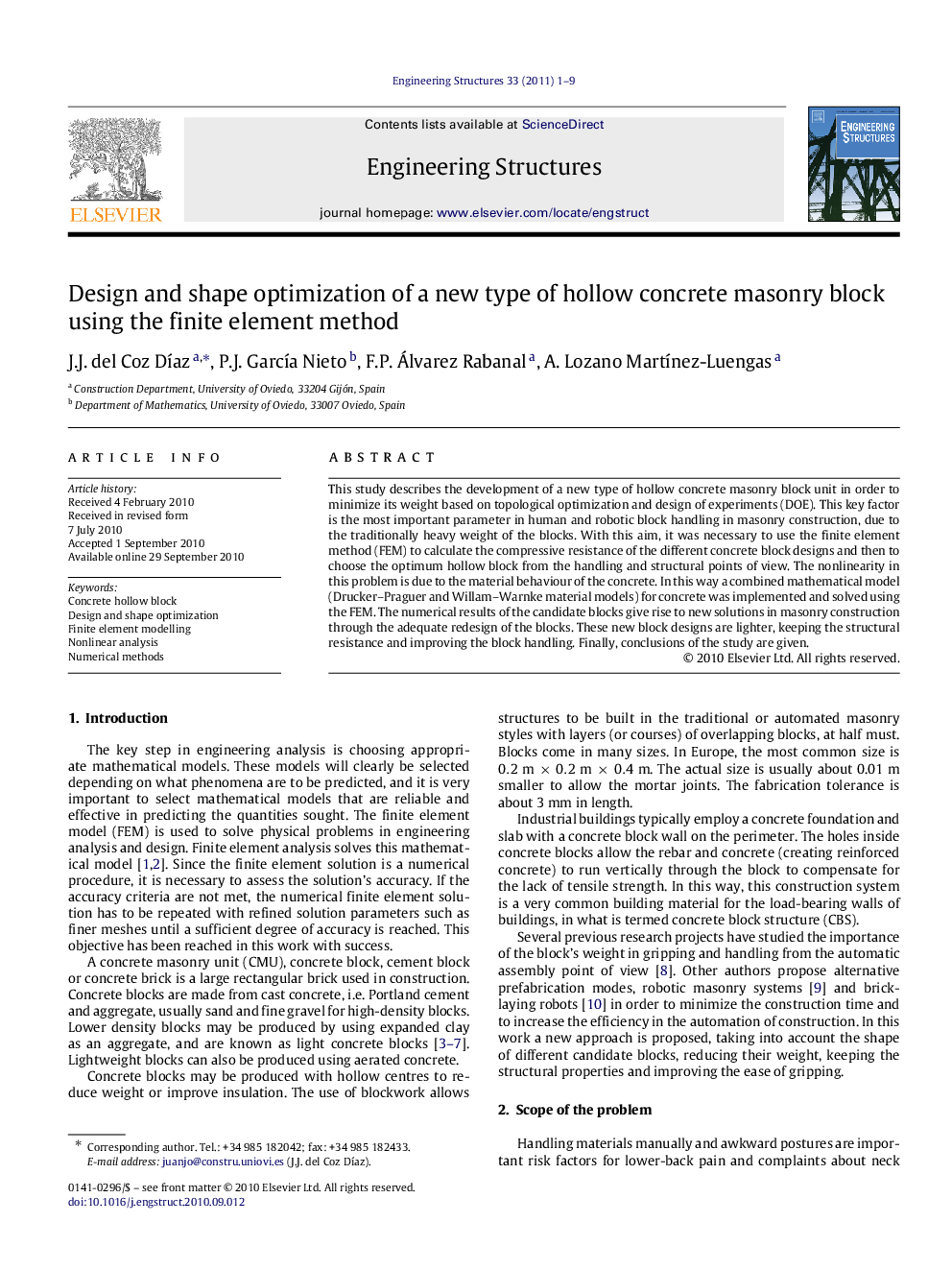| Article ID | Journal | Published Year | Pages | File Type |
|---|---|---|---|---|
| 267811 | Engineering Structures | 2011 | 9 Pages |
This study describes the development of a new type of hollow concrete masonry block unit in order to minimize its weight based on topological optimization and design of experiments (DOE). This key factor is the most important parameter in human and robotic block handling in masonry construction, due to the traditionally heavy weight of the blocks. With this aim, it was necessary to use the finite element method (FEM) to calculate the compressive resistance of the different concrete block designs and then to choose the optimum hollow block from the handling and structural points of view. The nonlinearity in this problem is due to the material behaviour of the concrete. In this way a combined mathematical model (Drucker–Praguer and Willam–Warnke material models) for concrete was implemented and solved using the FEM. The numerical results of the candidate blocks give rise to new solutions in masonry construction through the adequate redesign of the blocks. These new block designs are lighter, keeping the structural resistance and improving the block handling. Finally, conclusions of the study are given.
